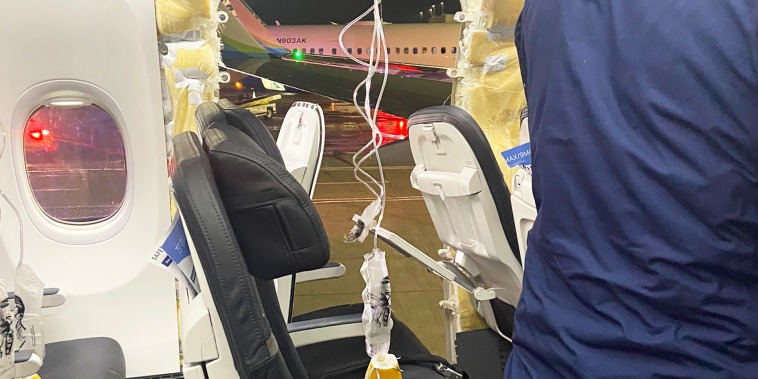The Shocking Reality: ‘High Stakes’ in Alaska Air Flight Investigation, NTSB Chair Warns

The accident that happened on an Alaska Airlines Flight 261 is under intense scrutiny, and the stakes are very high in the investigation. On January 31, 2000, the MD-83 passenger plane crashed into the Pacific Ocean off the coast of Southern California after experiencing issues with its horizontal stabilizer actuator wire. All 88 people onboard were killed.
The National Transportation Safety Board (NTSB) is the federal agency in charge of investigating the incident. On March 3rd, NTSB Chair Robert Sumwalt spoke to the media in Washington, D.C., expressing his thoughts on the inquiry.
Sumwalt stated that the Alaska Airlines Flight 261 case would be the second of the NTSB’s mission as part of the new safety culture that the agency is initiating. He believed that findings from the investigation would set a precedent for not only Alaska Airlines, but all airlines, in the future.
Sumwalt stated, “Now, the mission is to determine not only what happened, but to answer the ‘why’ and find effective solutions that will help prevent similar accidents from ever happening again.” Sumwalt noted that the NTSB has “a bigger role than just investigation,” and they will look for potential safety measures that could be implemented by the airline industry.
At present, the NTSB has collected evidence and conducted witness interviews related to the accident. Sumwalt indicated that a preliminary report summarizing the factual information should be made public soon. A full and thorough study of the causes of the accident will be released sometime later this year.
As the investigation comes to a close, the public awaits the details of why the Alaska Airlines Flight 261 crashed. Sumwalt and his team at the NTSB are highly aware of the significance and potential implications of the findings. Their work will no doubt set a new standard for the airline industry and, hopefully, prevent another tragedy like this from happening again.
The accident that happened on an Alaska Airlines Flight 261 is under intense scrutiny, and the stakes are very high in the investigation. On January 31, 2000, the MD-83 passenger plane crashed into the Pacific Ocean off the coast of Southern California after experiencing issues with its horizontal stabilizer actuator wire. All 88 people onboard were killed.
The National Transportation Safety Board (NTSB) is the federal agency in charge of investigating the incident. On March 3rd, NTSB Chair Robert Sumwalt spoke to the media in Washington, D.C., expressing his thoughts on the inquiry.
Sumwalt stated that the Alaska Airlines Flight 261 case would be the second of the NTSB’s mission as part of the new safety culture that the agency is initiating. He believed that findings from the investigation would set a precedent for not only Alaska Airlines, but all airlines, in the future.
Sumwalt stated, “Now, the mission is to determine not only what happened, but to answer the ‘why’ and find effective solutions that will help prevent similar accidents from ever happening again.” Sumwalt noted that the NTSB has “a bigger role than just investigation,” and they will look for potential safety measures that could be implemented by the airline industry.
At present, the NTSB has collected evidence and conducted witness interviews related to the accident. Sumwalt indicated that a preliminary report summarizing the factual information should be made public soon. A full and thorough study of the causes of the accident will be released sometime later this year.
As the investigation comes to a close, the public awaits the details of why the Alaska Airlines Flight 261 crashed. Sumwalt and his team at the NTSB are highly aware of the significance and potential implications of the findings. Their work will no doubt set a new standard for the airline industry and, hopefully, prevent another tragedy like this from happening again.